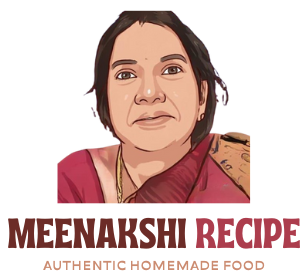If you’ve ever been to a South Indian celebration, temple offering, or breakfast buffet, chances are you’ve come across a delightful, golden-orange sweet called Kesari — also known as Kesari Bath in Karnataka or Sheera in Maharashtra.
But what exactly goes into making this dish? And more specifically…
What is Kesari Rava made of?
Let’s explore this delicious ingredient and understand what gives Kesari its rich texture and unforgettable taste.
🌾 What is Rava?
Before we get to Kesari Rava, let’s talk about Rava (also called Sooji or Semolina). Rava is a coarse flour made from durum wheat. It’s the endosperm of the wheat grain, ground without the bran and germ — which gives it a smooth yet slightly grainy texture.
It’s used in a wide variety of Indian dishes — both savory (like upma, dosa) and sweet (like rava laddus, sheera, and of course, Kesari).
🍮 What is Kesari Rava?
In simple terms, Kesari Rava is regular suji or semolina used to make Kesari, the traditional Indian sweet dish.
It is not a separate type of Rava — “Kesari Rava” refers to the semolina used in the dish called Kesari.
So technically, Kesari Rava is just medium or fine-grain suji/semolina, roasted and cooked with sugar, ghee, and saffron or food coloring to give it that famous orange glow and melt-in-the-mouth texture.
🧂 Ingredients Used in Kesari Rava Dish
Here’s what typically goes into the making of the Kesari Bath (Kesari Rava dish):
1. Rava (Sooji/Semolina)
The hero of the dish.
Usually roasted to enhance flavor and avoid clumping.
2. Sugar
Gives the dish its sweet taste.
You can adjust the quantity depending on preference.
3. Ghee
Adds richness and aroma.
Used generously in traditional recipes for that authentic taste.
4. Water or Milk
Used to cook the Rava.
Milk gives it a creamier texture, while water is lighter.
5. Kesari (Saffron) or Orange Food Color
The word “Kesari” actually means saffron in Sanskrit.
Saffron strands or food color gives the dish its signature golden-orange hue.
6. Cardamom (Elaichi)
Crushed or powdered, for aroma and a hint of spice.
7. Cashews and Raisins
Fried in ghee and added on top or mixed in for texture and richness.
🍽️ Why Is It Called “Kesari”?
The name Kesari comes from Kesar, the Hindi/Sanskrit word for saffron — a prized spice known for its color, aroma, and slightly floral taste.
While many modern versions use orange food color to replicate the classic look, the traditional and premium versions are flavored with real saffron soaked in warm milk.
🧁 Variations of Kesari Across India
Though the core recipe stays the same, Kesari has different names and slight variations:
| Region | Local Name | Special Twist |
|---|---|---|
| Karnataka | Kesari Bath | Sometimes flavored with pineapple or banana 🍍🍌 |
| Tamil Nadu | Rava Kesari | Classic version with saffron/cardamom |
| Maharashtra | Sheera | Often made with milk, lighter in color |
| North India | Suji Halwa | Less colorful, but very similar |
📝 Final Thoughts
So to sum it up:
👉 Kesari Rava is simply semolina (rava/sooji) used to make the beloved Indian dessert Kesari.
It’s not a special kind of rava, but the same wheat-based semolina used in many Indian recipes.
When combined with sugar, ghee, saffron, and love, it turns into a festive delight that’s rich, aromatic, and utterly satisfying.
